In recognition of Juneteenth this month, HDC looks back on our projects that were associated with Black history.
In early 2002, HDC started a project to prepare a renovation master plan for the Gammon House in Springfield, Ohio. The Gammon House was built in 1850 by George Gammon, a Black abolitionist and is one of the few Underground Railroad sites in Ohio that was owned by a free person of color. HDC subsequently implemented the first phase of the renovation plan to stabilize the exterior.
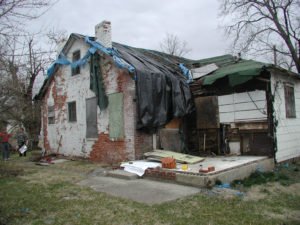
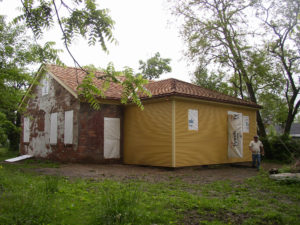
The Gammon House before (left) and during (right) stabilization in 2007.
In 2003, HDC was commissioned to prepare a feasibility study to renovate the Lincoln Theatre in Columbus into a modern performing arts center. The Lincoln Theatre, an Egyptian Revival theatre that opened in 1928, was funded by a Black developer, designed by a Black architect and built by a Black contractor. HDC’s study was used to secure funding from the City of Columbus and Franklin County, with the remaining funds raised by private donors. The grand re-opening occurred in 2009, and the project received awards from Columbus Landmarks Foundation, Heritage Ohio and the Ohio Historic Preservation Office.
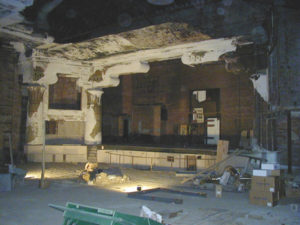
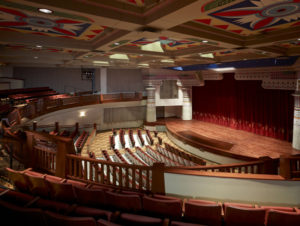
The interior of the theatre before (left) and after (right) rehabilitation in 2009.
In 2005, the City of Wichita commissioned HDC to prepare a redevelopment study for the Dunbar Theater, which was constructed in 1941 and named after Paul Lawrence Dunbar, the Black poet and author from Dayton, Ohio.
It was the focal point of a commercial and entertainment hub that served the McAdams neighborhood and surrounding neighborhoods that were predominantly African-American in origin until 1963, when the theater closed. Power CDC, a developer that specializes in inner-city Wichita, acquired the building in 2007 and restored the façade and marquee in 2012-2014.
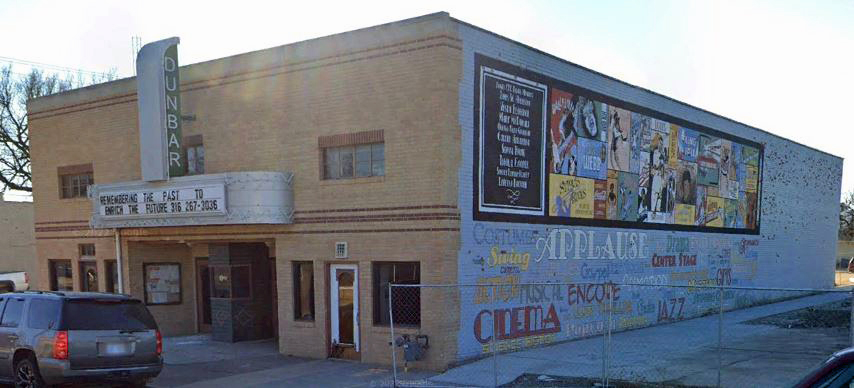
The Dunbar Theatre continues to be a work in progress.
In 2007, HDC prepared a Historic Structure Report and implemented the stabilization and exterior rehabilitation of the Lathrop House, which was built c. 1850 by Lucian Lathrop, a prominent white abolitionist in Sylvania, Ohio. The house contains an Underground Railroad Museum in the new basement and HDC completed an update to the Historic Structure Report in 2021 to rehabilitate the interior of the house and make it accessible.
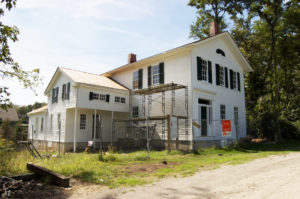
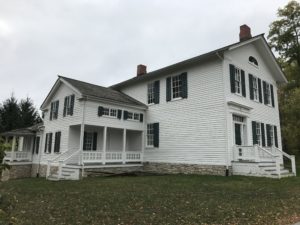 The Lathrop House before (left) and in 2021 (right).
The Lathrop House before (left) and in 2021 (right).
In 2017, HDC prepared a master plan to rehabilitate the Ozem Gardner House in Sharon Township near Worthington, Ohio, which was built in the 1840s by a local abolitionist, into offices for the Flint and Walnut Grove Cemeteries. The Gardner Family donated the original land to create the cemetery in 1821. The pandemic set the project back from its goal of opening in 2021. It is currently anticipated to be completed in 2022.
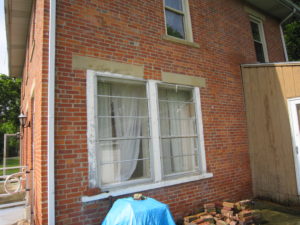
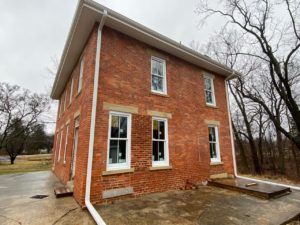
The Ozem Gardner House before (left) and after restoring the original masonry window openings (right).
In 2020, the City of Athens commissioned HDC to prepare a renovation master plan to convert the Mount Zion Baptist Church, built in 1904 by a Black congregation, into a community center and museum of African American Appalachian culture. The study was used to obtain a grant from the National Trust for Historic Preservation to start the rehabilitation process.
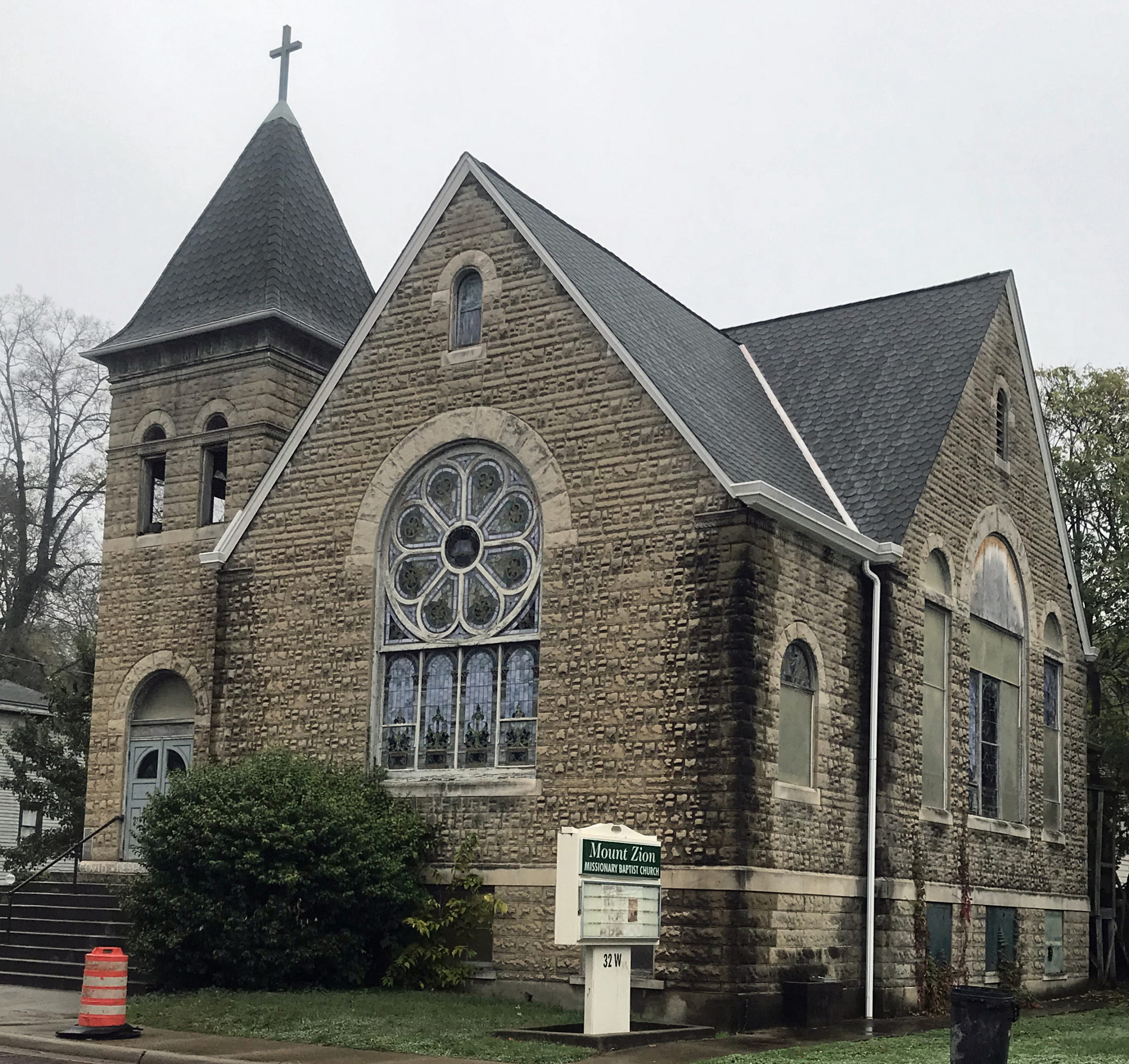
The Mount Zion Baptist Church in Athens, Ohio.
HDC recently worked with architect O.A. Spencer on the interior renovation of the Martin Luther King Jr. Performing and Cultural Arts Complex in Columbus, whose mission is to connect community through the arts by engaging central Ohio through performing, cultural and educational programs of high artistic merit that increase and disseminate knowledge regarding the vast and significant contributions of Black Americans to the culture and history of America and the world.
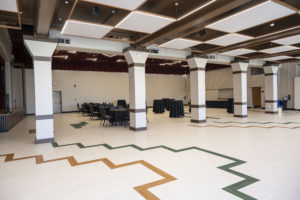
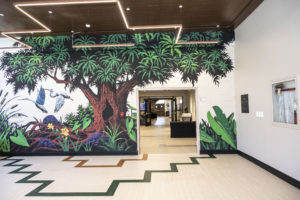
The main Auditorium with new flooring, ceiling and lights, looking through the updated column (left) and looking into the Lobby past the mural by artist Wali Neil (right). Photos by Shellee Fisher Photography.
And finally, HDC is very honored to have been awarded the project to prepare a Historic Structure Report of the Macedonia Missionary Baptist Church in Lawrence County, across the Ohio River from Huntington, West Virginia. The church was built c. 1849 and is one of the first Black churches constructed west of the Appalachian Mountains. The team is looking forward to starting work in August!


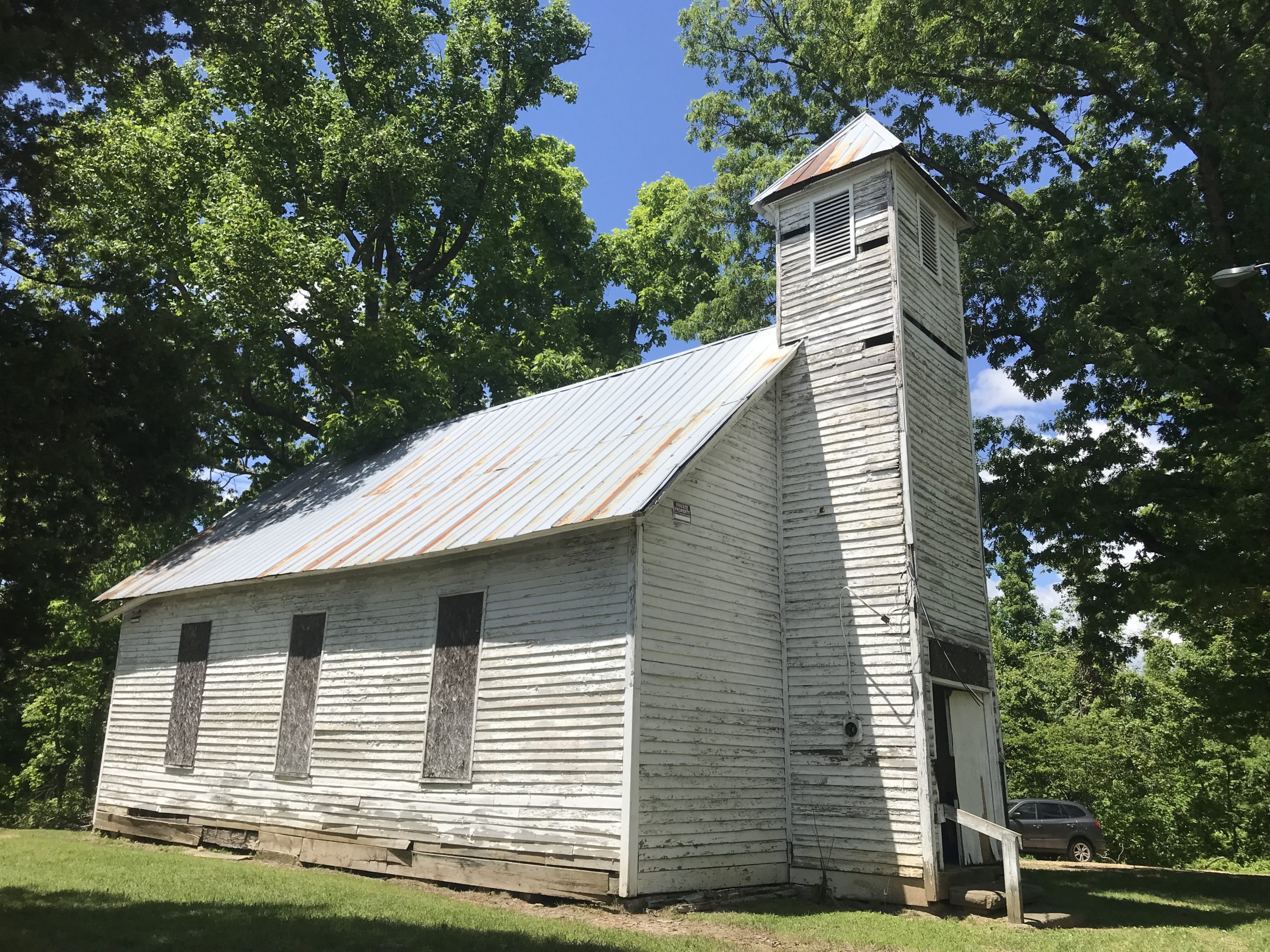
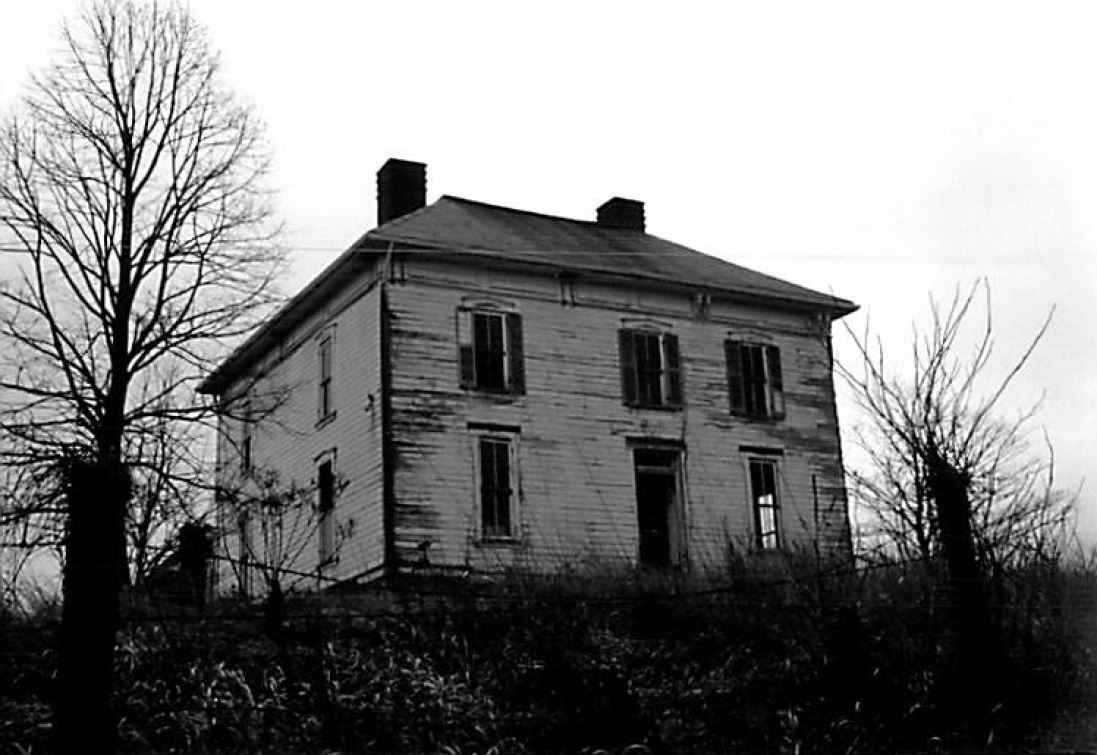
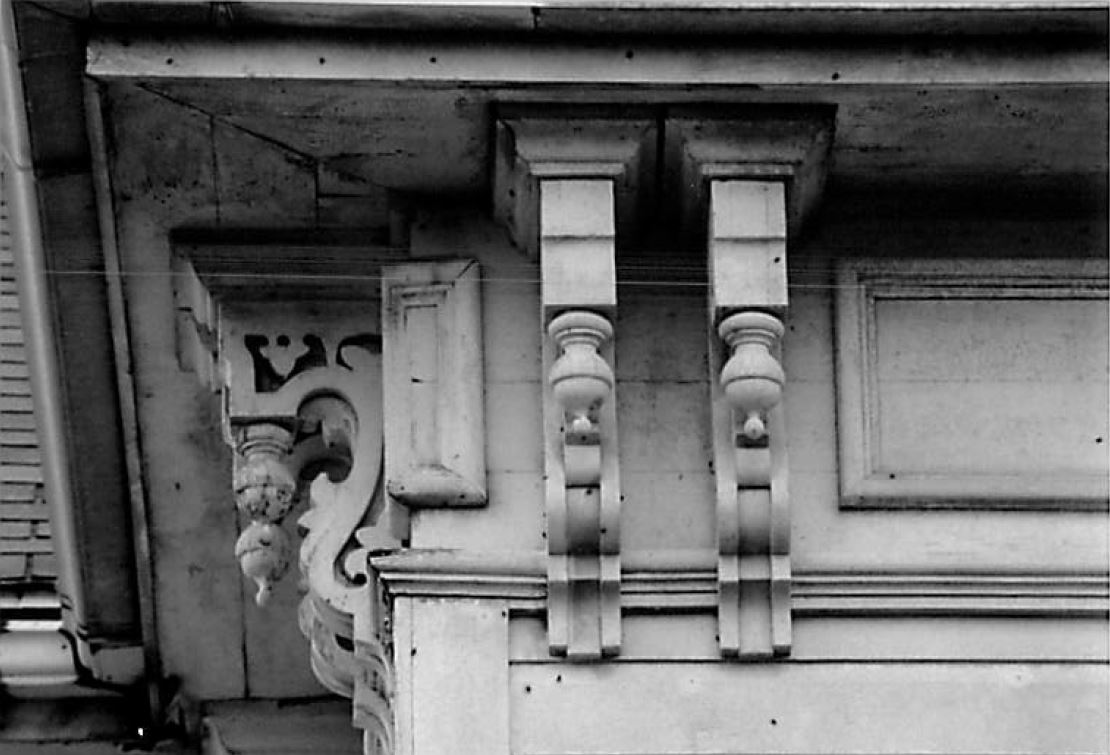
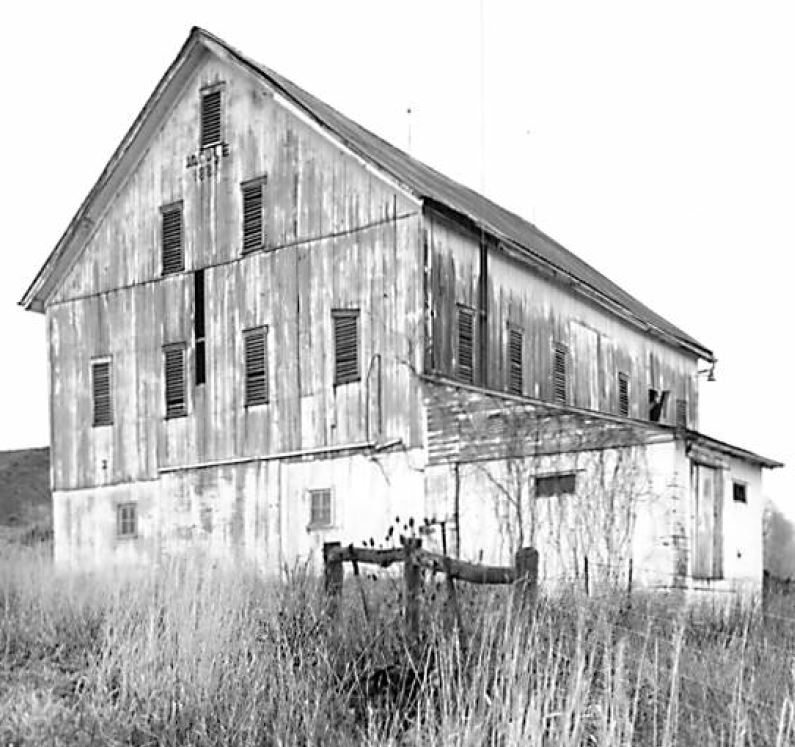
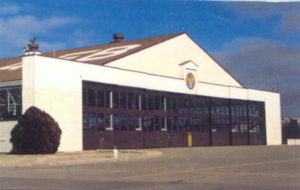
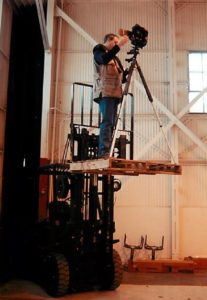
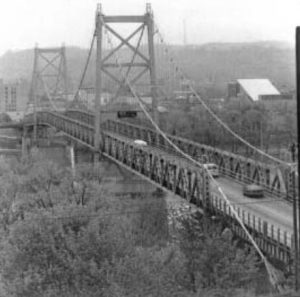
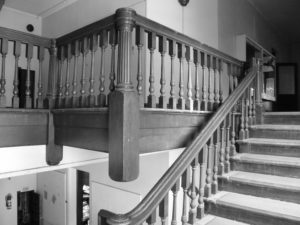
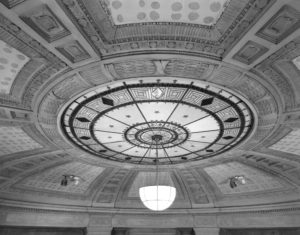
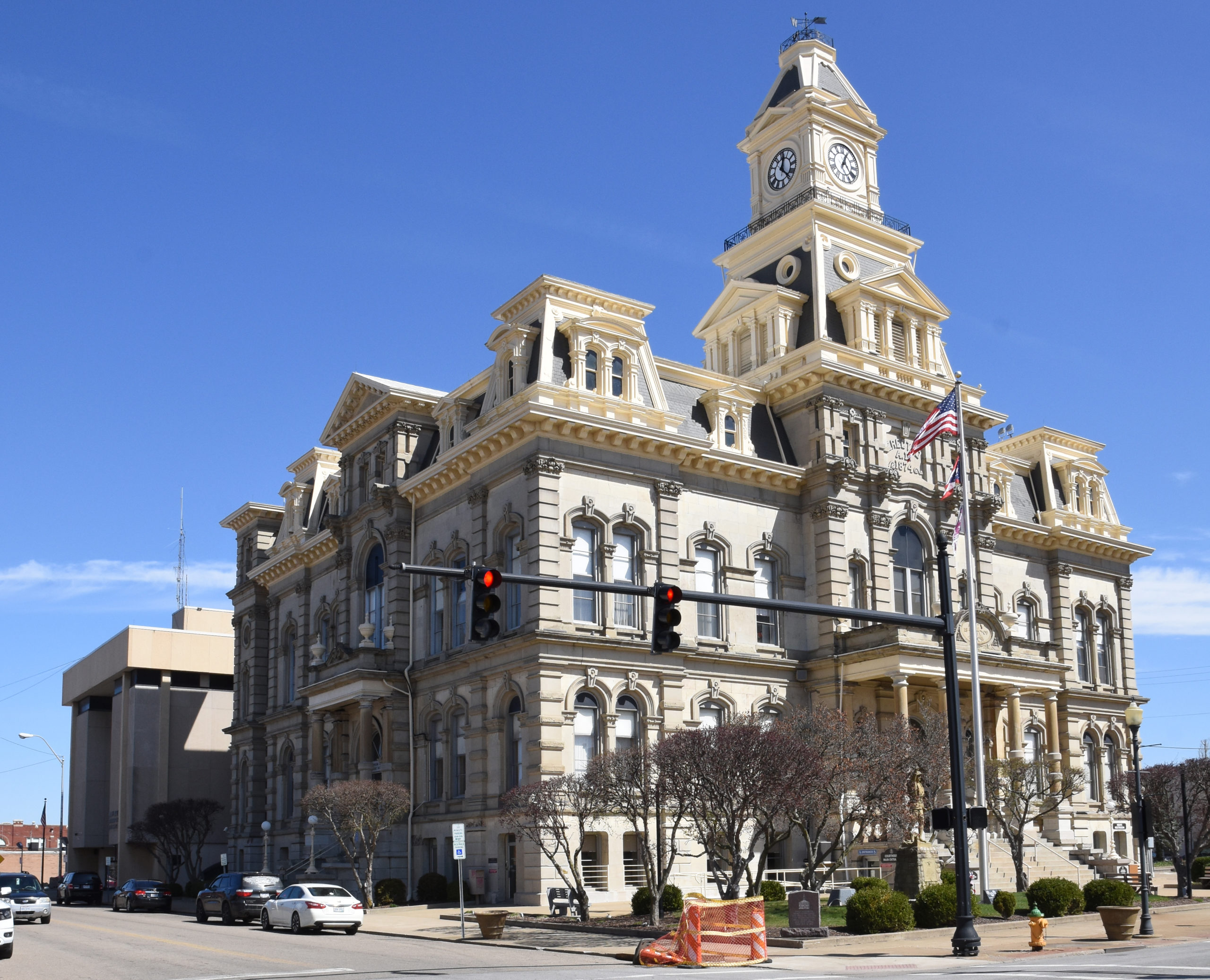
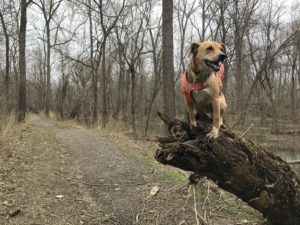
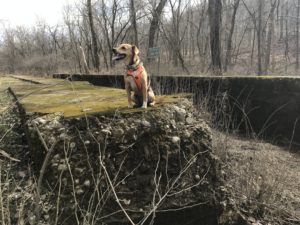 Ziti on top of a fallen log on the towpath (left) and perched on the walls of Lock 10 (right).
Ziti on top of a fallen log on the towpath (left) and perched on the walls of Lock 10 (right). CAD drawing of the north (front) elevation of the Kentucky Capitol Annex building.
CAD drawing of the north (front) elevation of the Kentucky Capitol Annex building.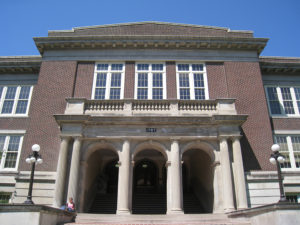
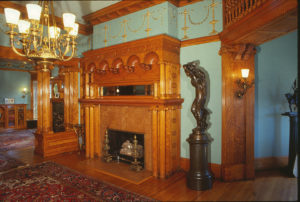 Main entry of Campbell Hall (left) and the interior of Five Oaks Historic Home (right).
Main entry of Campbell Hall (left) and the interior of Five Oaks Historic Home (right).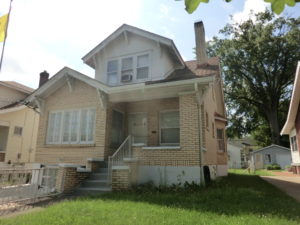
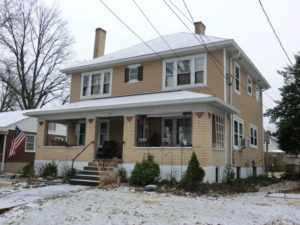 A small Bungalow house (left) and a larger American Foursquare (right).
A small Bungalow house (left) and a larger American Foursquare (right).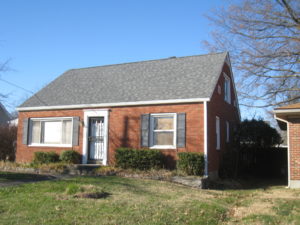
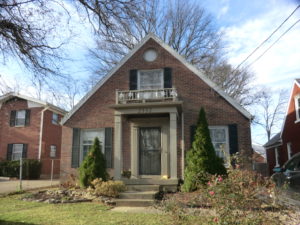 A simple side gable Cape Cod home (left) and a more detailed front gable version (right), both in the Colonial Revival style.
A simple side gable Cape Cod home (left) and a more detailed front gable version (right), both in the Colonial Revival style.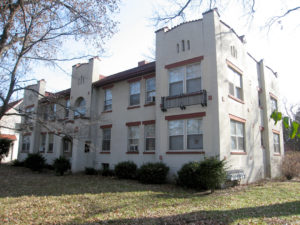
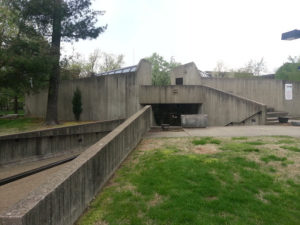 A Mission style apartment building on Audubon Parkway (left) recommended as contributing to the Audubon Park Historic District and Brutalist Style Interfaith Mission Center built in 1974 on the University of Louisville campus (right).
A Mission style apartment building on Audubon Parkway (left) recommended as contributing to the Audubon Park Historic District and Brutalist Style Interfaith Mission Center built in 1974 on the University of Louisville campus (right).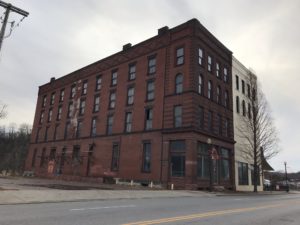
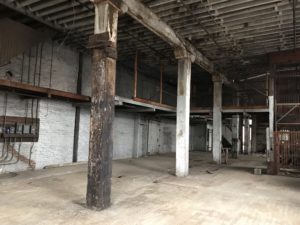 The 4-story red brick building was constructed in 1894 and the 4-story yellow brick addition was built in 1913 (left). The interior of the original building retains almost all of its historic character (right).
The 4-story red brick building was constructed in 1894 and the 4-story yellow brick addition was built in 1913 (left). The interior of the original building retains almost all of its historic character (right).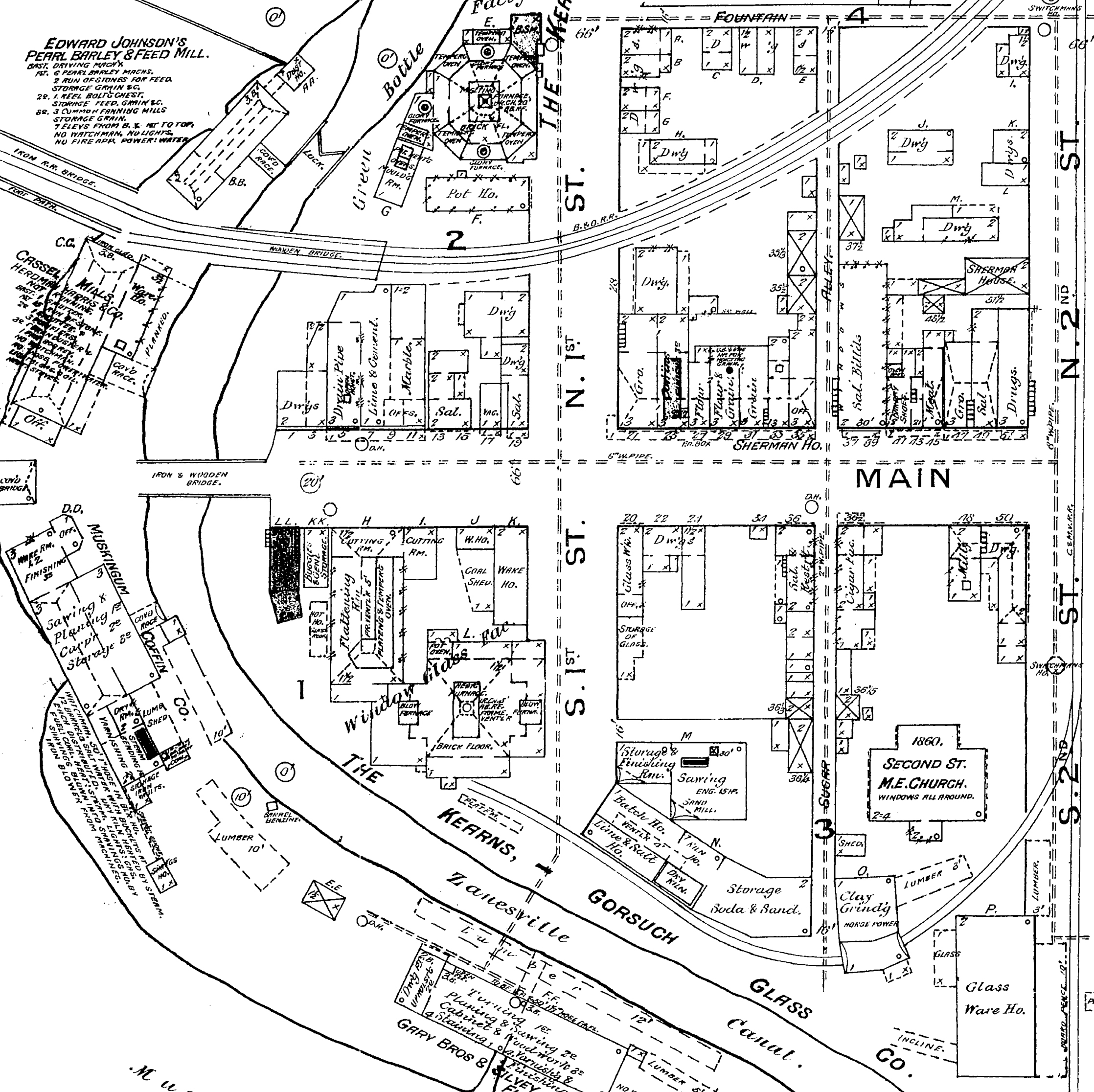 The 1886 map shows the site occupied by the window glass plant of the Kearns Gorsuch Glass Company.
The 1886 map shows the site occupied by the window glass plant of the Kearns Gorsuch Glass Company.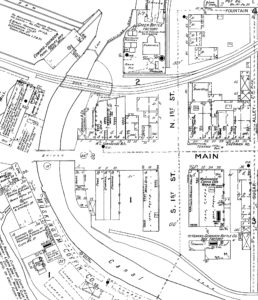
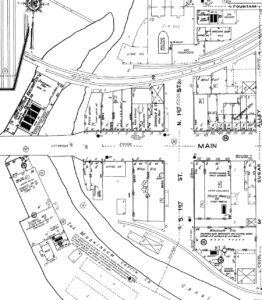 The 1895 map (left) shows the 1894 building on the site of the former glass factory. The 1919 map (right) shows the 1894 building and the 1913 addition along with warehouses that are no longer standing.
The 1895 map (left) shows the 1894 building on the site of the former glass factory. The 1919 map (right) shows the 1894 building and the 1913 addition along with warehouses that are no longer standing.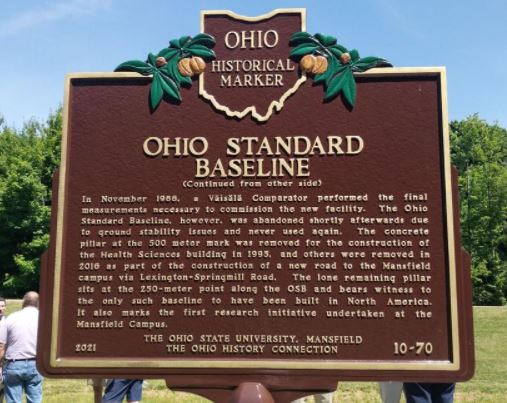 The Ohio Standard Baseline historical marker
The Ohio Standard Baseline historical marker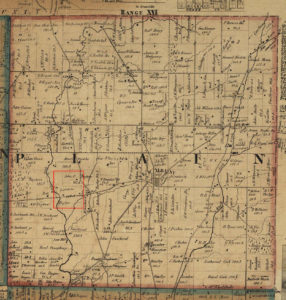
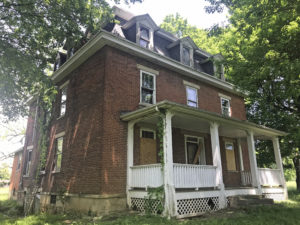 L: The red rectangle indicates the location of the Taylor Farm property on an 1856 map. R: The southwest corner of the Taylor Farmhouse
L: The red rectangle indicates the location of the Taylor Farm property on an 1856 map. R: The southwest corner of the Taylor Farmhouse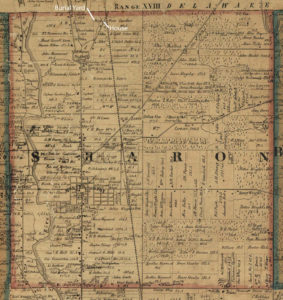
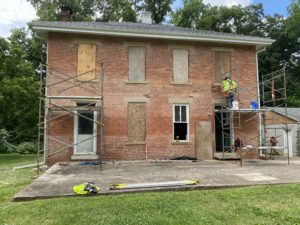 L: The “burial yard” and house are at the northern edge of the township. R: A mason working on repointing the brick this summer at the Gardner House.
L: The “burial yard” and house are at the northern edge of the township. R: A mason working on repointing the brick this summer at the Gardner House.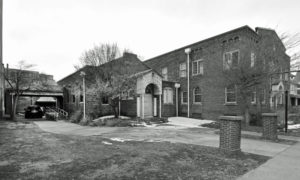
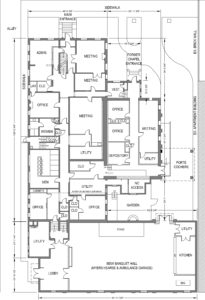 L: Northeast corner of 23 W. Second Avenue, showing the original funeral home on the right, the chapel in the middle, and the porte cochere on the left with the garage building behind. Photograph by Jeff Bates. R: HDC’s sketch plan of the first-floor layout.
L: Northeast corner of 23 W. Second Avenue, showing the original funeral home on the right, the chapel in the middle, and the porte cochere on the left with the garage building behind. Photograph by Jeff Bates. R: HDC’s sketch plan of the first-floor layout. CAD drawing of a portion of the north elevation of Doan Hall.
CAD drawing of a portion of the north elevation of Doan Hall.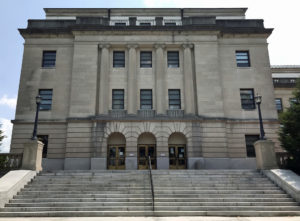
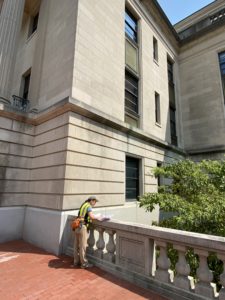 L: A portion of the north elevation of the Capitol Annex. R: Charissa Durst taking notes during the field assessment
L: A portion of the north elevation of the Capitol Annex. R: Charissa Durst taking notes during the field assessment
 L: Ziti looks like she’s having fun in her first event, coming in at 8.168 seconds. R: Ziti looks totally ripped as she finishes in 7.905 seconds at her second event! Official photographs were shot by Sabrina Vasko Photography
L: Ziti looks like she’s having fun in her first event, coming in at 8.168 seconds. R: Ziti looks totally ripped as she finishes in 7.905 seconds at her second event! Official photographs were shot by Sabrina Vasko Photography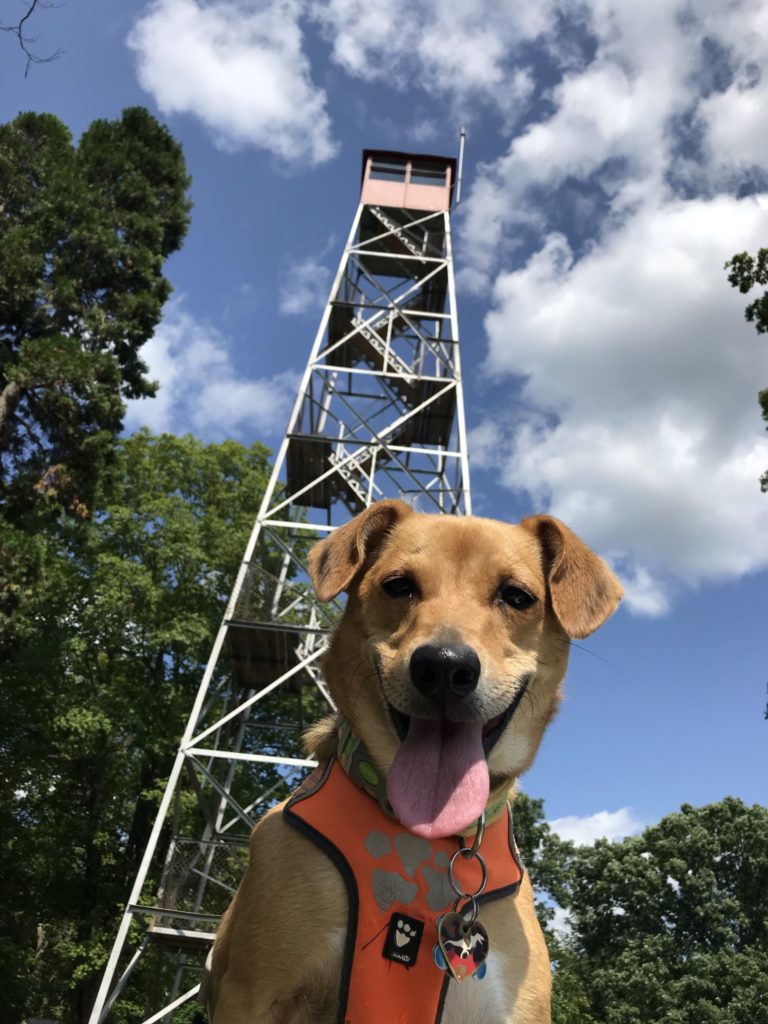 Ziti in front of the smoke tower (built in 1925) in Scioto Trail State Park.
Ziti in front of the smoke tower (built in 1925) in Scioto Trail State Park.
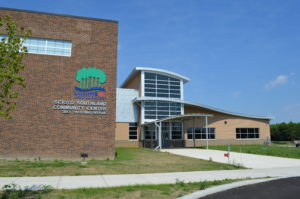
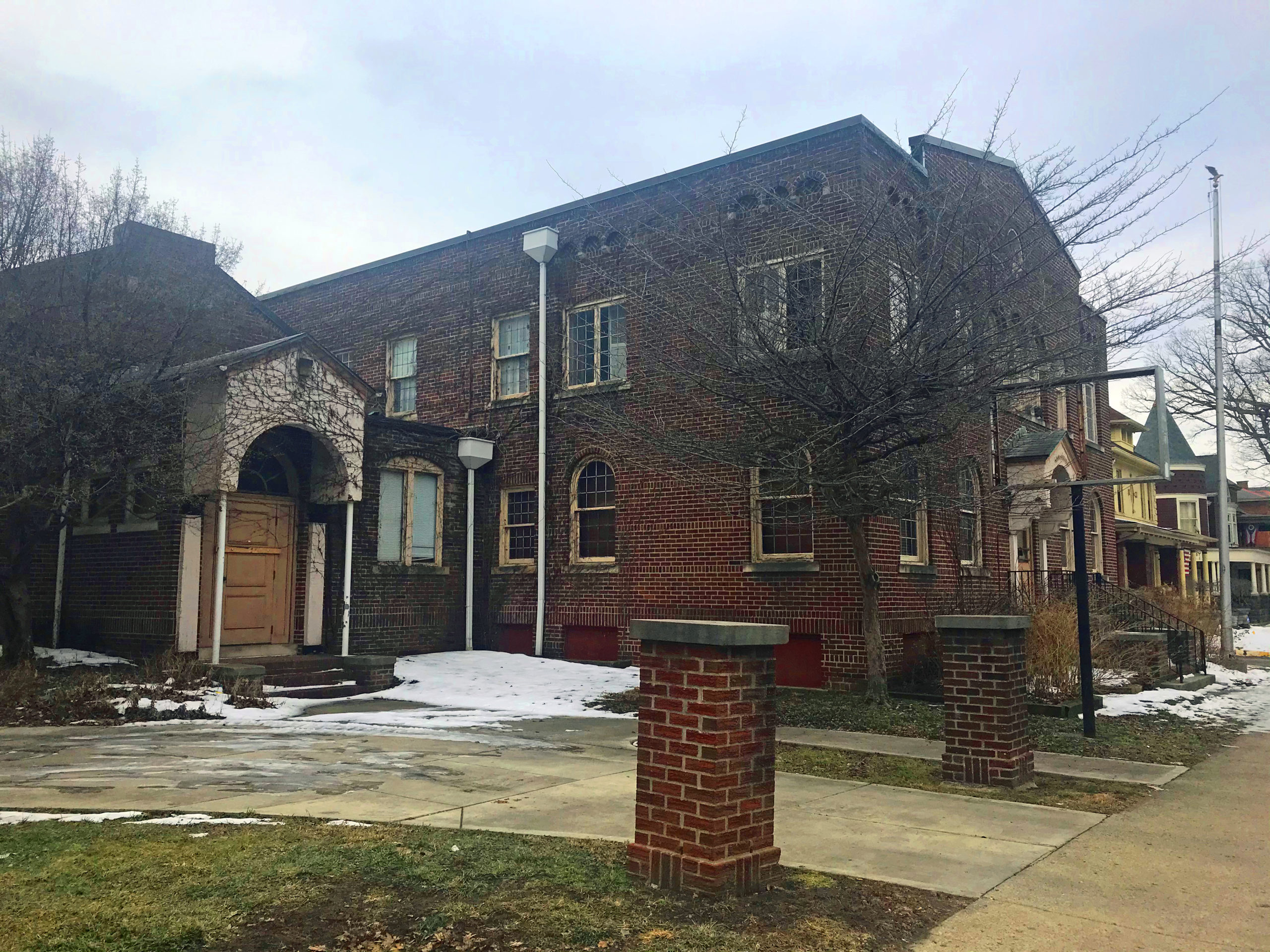 Northeast corner of the main building at right and the chapel at left
Northeast corner of the main building at right and the chapel at left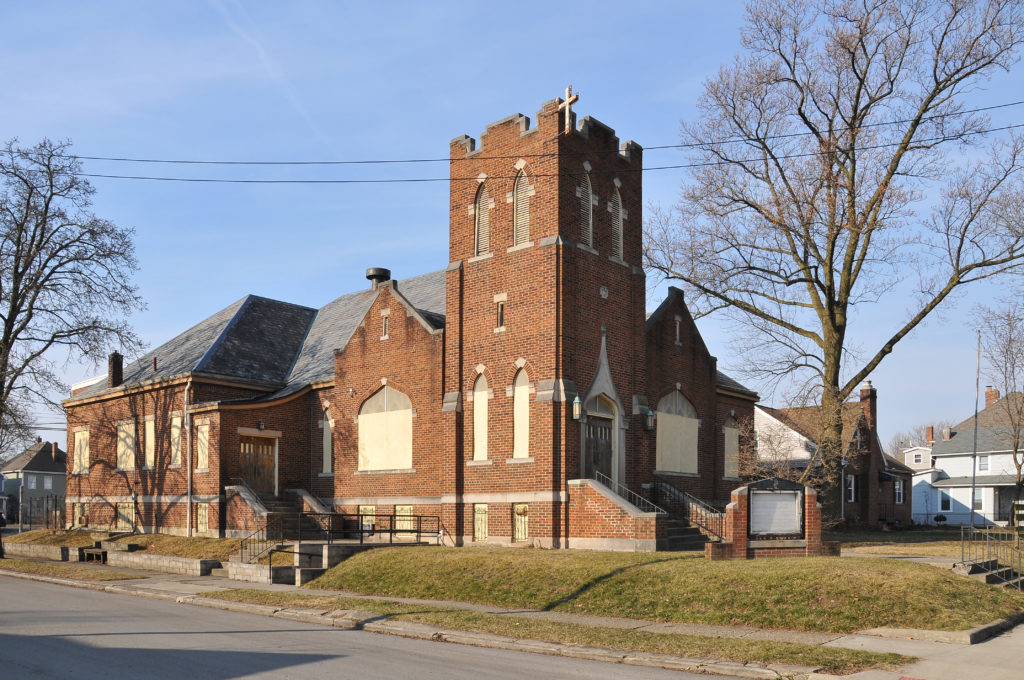 The former Washington Avenue United Brethren Church in Merion Village
The former Washington Avenue United Brethren Church in Merion Village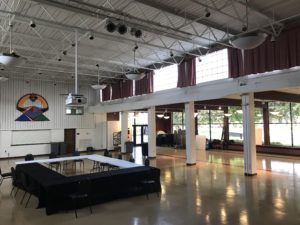

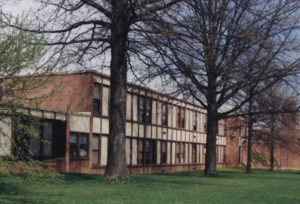
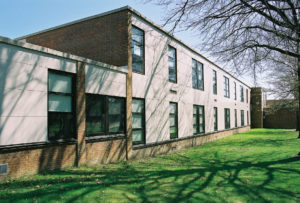
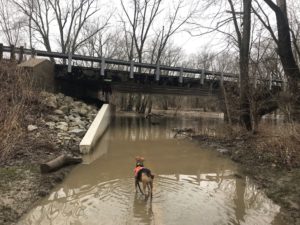
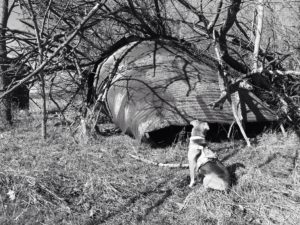
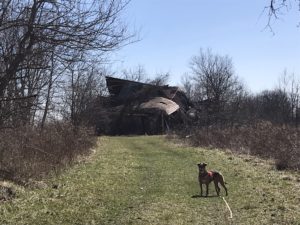
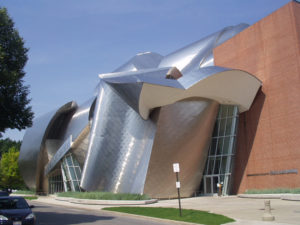

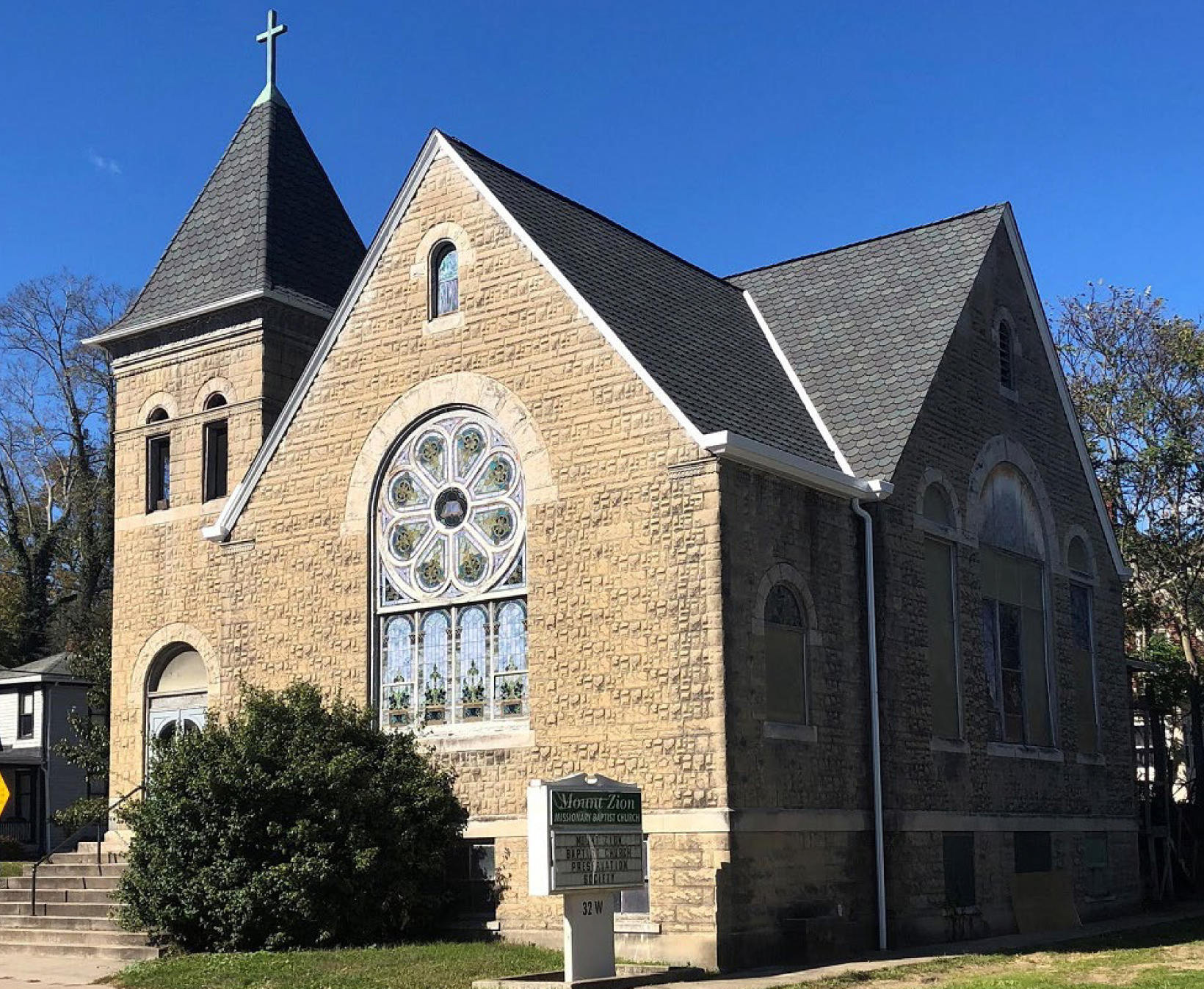
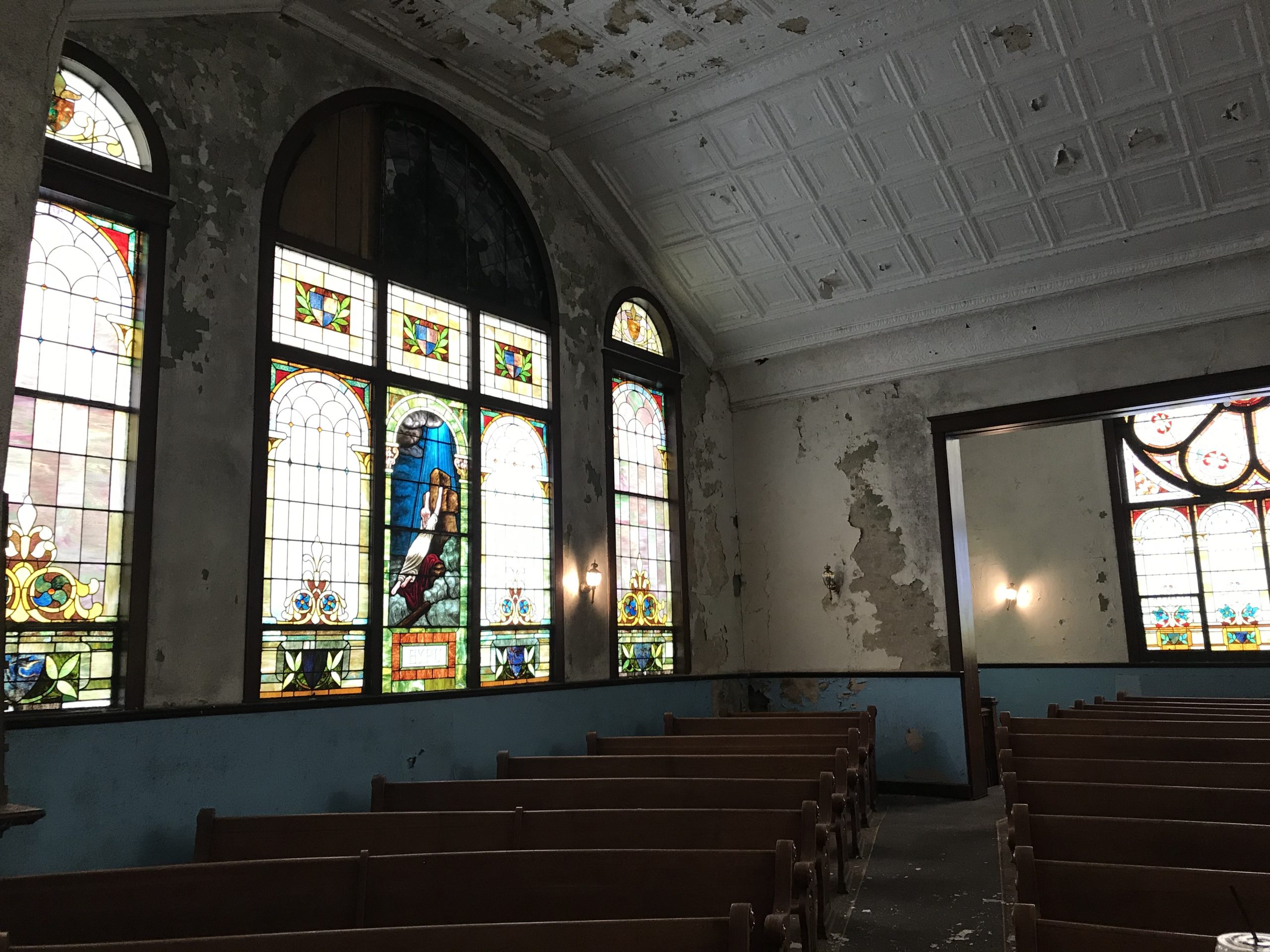
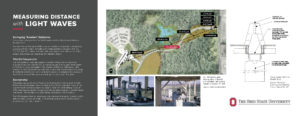 Final proof of the interpretive sign to be located at the 250-M pillar.
Final proof of the interpretive sign to be located at the 250-M pillar.
